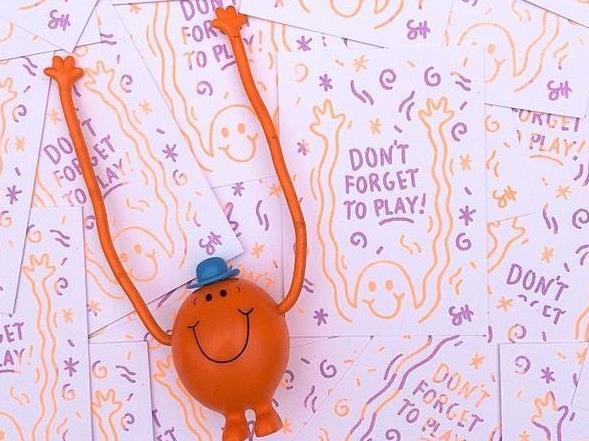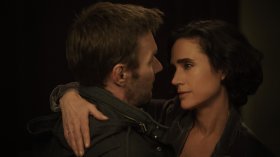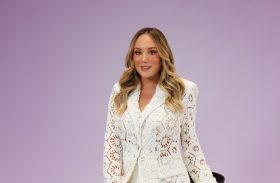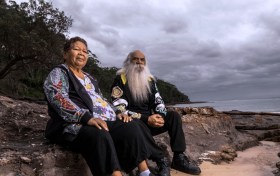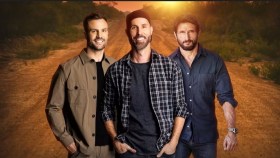Image: Courtesy of graphic artist Spencer Harrison.
When starting out a career in the arts, securing the dream job can feel near impossible. A common strain of frustration can be that common reply from prospective employees of ‘you don’t have enough experience,’ while you’re left thinking, ‘I can’t get enough experience because no one will hire me to give me the experience!’
Internships can be a good way to develop the skills required for the dream role, but with unchecked quality, uncertain payment terms and the possibilities of exploitation, they can soon lose their sheen.
As the push for artists to become artpreneurs becomes more prevalent, bright young artists, filmmakers and writers are placing their career trajectory in their own hands and gaining experience by developing their own personal projects.
Graphic artist Spencer Harrison, editor Sophie Allan, and writer and editor Brodie Lancaster are among the many whose self-initiated projects have helped propel their careers. They share the lessons learned along the way.
Create your own dream job
Founding Editor-in-Chief Sophie Allan created the publishing venture CHART Collective to combine her interests in the environment, place, identity, art and the written word.
Allan advised, ‘Don’t wait for someone to give you the opportunity.’
Initially looking for work in this creative literary field, Allan came to the ‘sobering realisation’ that such opportunities were limited.
‘I realised if I wanted to get the chance to be an editor who worked with words and art that were meaningful, then it was probably a better bet to start my own project and become the director of my own creative project.
Show don’t tell
While it is important to clearly present your skills and experience in your resume, it can be much more effective to demonstrate them in a practical way.
A personal project follows the principle ‘show don’t tell’, said Brodie Lancaster, the creator of Filmme Fatales, a zine on women and cinema.
‘People aren’t interested in looking at your CV, they are interested in something they connect with,’ said Lancaster.
Talking about self-initiated projects at the upcoming Jacky Winter Gives You the Business conference in Sydney on 9 May, Lancaster said starting a project based on the work you hope to do says a lot more than just talking about the things you would like to do.
‘It shows you have the initiative and the drive to make it work for yourself, and then other people take notice and pay attention to that.’
Artistic control
Unlike client work or undertaking an internship where you are assigned tasks, a personal project gives you artistic and creative control.
‘In that way you can show exactly what you are about so it is kind of a living, breathing CV,’ added Lancaster.
For graphic artist Spencer Harrison, creating side projects such as MNML THING and Rhythm & Repeat were a way to explore different styles and techniques outside of client work.
‘It becomes more like art because it is more personal, and more authentic maybe, because there are no client constraints,’ said Harrison.
Broaden your skill base
As an artist or writer, you become known for what you do. Personal projects are a way to align different interests, be it feminism and film in the case of Filmme Fatales, or fiction and the environment like CHART Collective. For Harrison, creating Rhythm & Repeat was a way to explore pattern design.
‘Clients come to you for what they know you can do and work that they have seen before, so if you want to develop new work you have to do it on the side because it is hard to dump a completely new style on a client,’ he said.
Boost your CV
A personal project is always worth putting in your portfolio as it can help you stand out in an interview, said Harrison. ‘Directors and clients are interested to see that stuff – it shows that you are self-driven, motivated and passionate about what you are doing.
Harrison includes all his personal projects in a ‘side projects’ section of his portfolio and encourages others to share their work on social media.
‘My biggest tip with doing side projects is that you have to be sharing it and getting it out there. It could be about you improving your own skills, but there is potential for it to be more.
‘To help you progress your career it needs to be out in the world.’
Find your people
A personal project should be considered carefully and approach a topic creatively, as well as be something you are passionate about. This will ensure your project gets the attention of the right people.
It is difficult for Lancaster to gauge how many people read or talk about Filmme Fatales, but she is sure it reaches an interested audience.
‘When you are doing a niche, small-scale personal project, it’s not going to appeal to everyone but you would hope that it appeals to your people, and people who share the same interest,’ she said.
‘If those people find out about it and they see something that they like, or something they connect with, then that really helps to form an organic community based on shared interests.’
Job opportunities
Now a senior editor at The Good Copy, Lancaster said ‘every job opportunity I have had has come from making Filmme Fatales.’
Harrison credits his success as a graphic artist to his side projects and the tendency for them to gain publicity over his other work. ‘Every side project I’ve done has led to exposure, it has led to client work, it has led to other opportunities, it has been amazing,’ he said.
For Allan, CHART Collective could lead to job opportunities in the future, but she said ‘it’s not my drive, but it’s certainly my hope.
‘It is basically an opportunity for me to express on a personal and professional level what my interests are, what my abilities are,’ said Allan.
Personal projects don’t just lead to job offers, they can also turn into full-time projects themselves. Lancaster points to the example of the short film Obvious Child which was made as a side project while the director was working in an office job.
‘The short film did so well and was something that she felt really invested in that she did a Kickstarter campaign and made it into a feature and now it is one of last year’s best comedies,’ said Lancaster.
Set realistic goals
When teaching design students, Harrison offers practical advice to those wanting to start personal projects: set your own brief, and do it regularly.
‘You have to set yourself a brief so you have something you are working towards. If you set no framework, you will be completely lost,’ said Harrison.
‘The other thing you need to do is do it regularly and schedule time once and week, or once a day, for example.
‘And keep it simple as well so it is achievable to do on a regularly basis outside of work,’ he added.
Allan agreed that it is important to set realistic goals for your project, telling ArtsHub that CHART Collective ‘doesn’t commit to a publishing schedule that doesn’t fit into their lives.’
Let passion be the driver
While creating the zine has helped propel her writing career, Lancaster said starting a project with the intention of progressing your career or getting another job is the wrong reason to do it.
‘I think you should be doing something because it is something that matters to you, and something you care about,’ said Lancaster. ‘You need to think about the reason that you are making something.’
Pursuing a personal project often needs to fit around existing work and requires passion to sustain it, said Harrison. ‘It has to be something you are passionate about because you are doing it often outside of your other work and you are not getting paid for it, or at least not initially.
‘It has to be something you are going to want to do late at night or on the weekends,’ he added.
Allan agreed, ‘Committing to something like this is quite a big deal. I happen to be very lucky that I am in a point in my life where I am single and have no dependants and looking to be stimulated and I care a lot about the ideas that we talk about.
